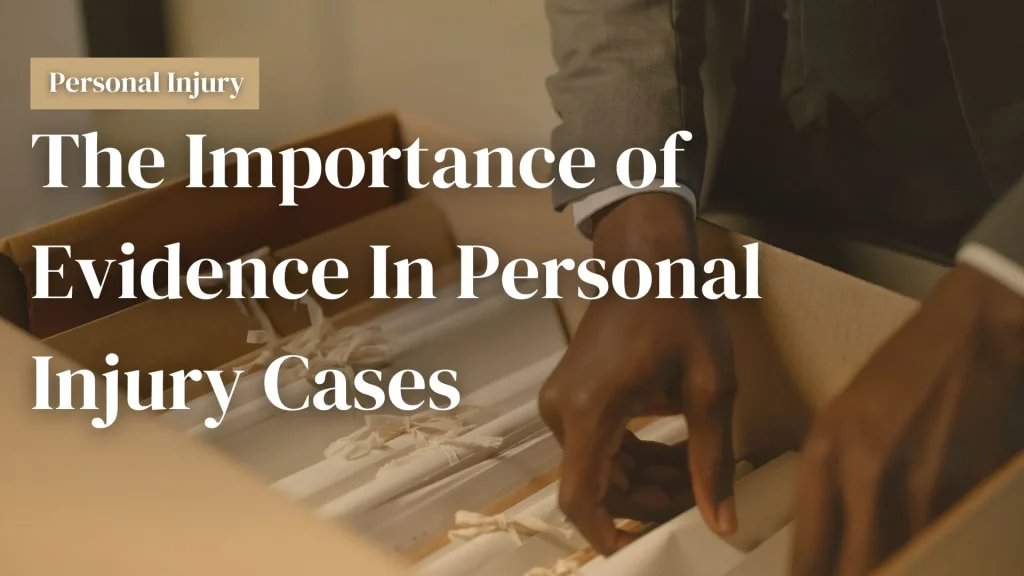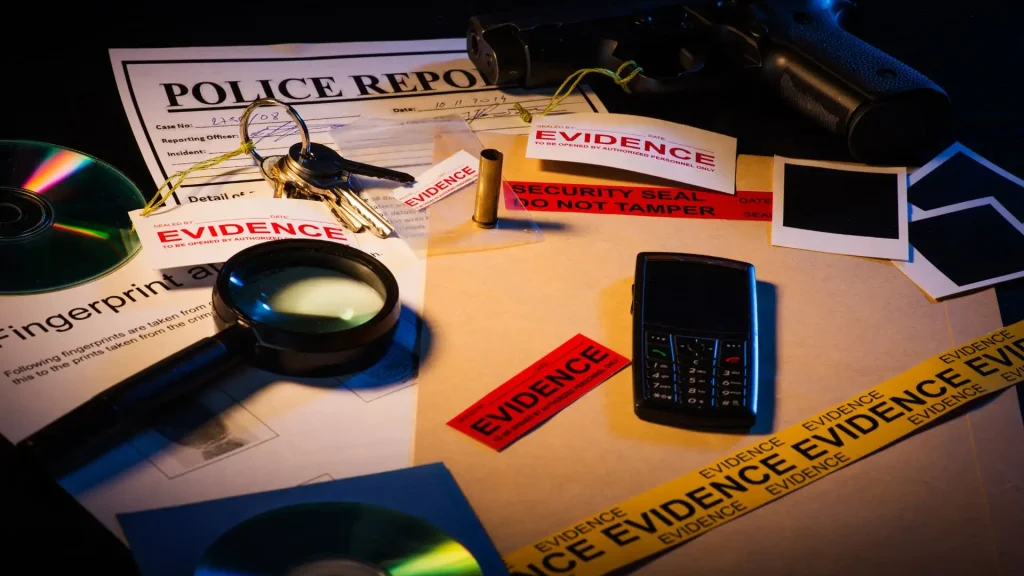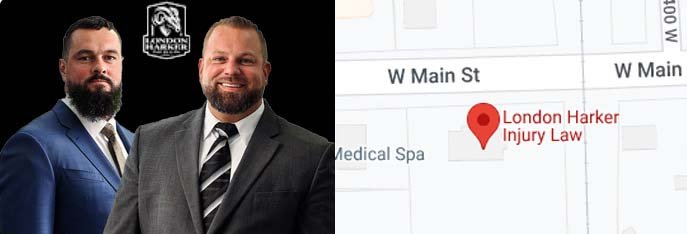Posted on Wednesday, July 24th, 2024 at 9:00 am

Winning a personal injury claim isn’t just about telling a convincing story. It’s about backing up your story with solid evidence. Personal injury evidence takes the form of any information or material that can support or validate your claim.
In a personal injury case, the plaintiff carries the burden of proving their case by a preponderance of the evidence. This legal standard means the plaintiff and their Sandy, UT, personal injury attorney must present evidence that demonstrates it’s more likely than not that the defendant’s actions caused their injuries. This is a lower standard than the “beyond a reasonable doubt” standard used in criminal cases. Nevertheless, it still requires strong, convincing evidence to persuade a judge or jury.
The supporting evidence needed for personal injury claims comes in many forms. It could be physical objects, spoken accounts, or written documentation. Your attorney will gather evidence from all available sources when building your claim.
Forms of Evidence in a Personal Injury Case
In personal injury cases, photographs, audio recordings, and videos can be powerful, capturing a moment in time and preserving it for future use. Some examples of evidence that might bolster your claim include:
- Photos – Images of damaged vehicles, property damage, skid marks, safety hazards on a property, and physical injuries can all provide crucial visual evidence of the car accident and its aftermath.
- Videos – Footage from traffic cameras, dashcams, surveillance cameras, and cell phones can offer a dynamic view of the incident, capturing details that may not be apparent in still photos.
- Audio recordings – Recordings of 911 calls or other conversations can provide valuable evidence of what happened at the time of the accident and during the immediate aftermath.
These types of evidence serve as visual and auditory records allowing insurance adjusters and jury members to access the details of the accident, injury and damages long after the incident occurred.
Physical Evidence
Physical evidence serves as a key building block of your personal injury case. Tangible items such as a damaged vehicle, personal belongings, open alcohol containers, drug paraphernalia, defective products, and visible physical injuries can make abstract concepts more tangible and provide concrete proof of the accident, injuries, and potential liability.
If your injury resulted from a faulty product, the product itself becomes a crucial piece of evidence. Preserving the product in its post-accident condition is crucial for showing the defect and its role in your injury. Additionally, collecting any related instruction manuals, packaging, or receipts can provide further context and strengthen your claim.
Documentary Evidence
Documentary evidence typically takes the form of written or printed material, but it can also be found in electronic formats. Some common forms of documentary evidence include:
- Medical Records – These records illustrate the extent of your injuries, the medical treatment you’ve received, and the medical bills. They offer a clear and unbiased timeline of your medical journey after the accident, from initial diagnosis to ongoing care. Records showing the progression or worsening of injuries can be particularly valuable in demonstrating long-term effects or permanent disability.
- Pay Stubs/Tax Returns – These can demonstrate the extent of your financial losses. This is from being unable to work during your recovery period. Even if you’re still able to work part-time, these records can illustrate the difference in your earnings.
- Police Reports – Police accident reports can be a treasure trove of information. These reports typically contain an objective account of the incident, statements from those involved and any witnesses, and the officer’s observations or conclusions about who was at fault.
- Expert Opinions – Specialists like medical professionals or accident reconstruction experts can offer insights that clarify the severity of injuries, the root cause of the accident, or the degree of negligence involved. Their professional opinions can potentially influence the outcome in your favor.
Eyewitness Testimony
Firsthand accounts from those who witnessed the incident can be very valuable in personal injury cases. Their significance lies in their ability to vividly recreate the circumstances surrounding the incident, providing a direct account of what occurred.
The reliability of witness statements can be affected by factors such as the witness’s proximity to the event, their attention and focus at the time, and their ability to accurately remember details. Although eyewitness accounts are often crucial, you usually consider them alongside other forms of evidence to build a comprehensive and convincing case.
Challenges in Collecting and Introducing Evidence

Collecting evidence, especially in the immediate aftermath of an incident, can be daunting. It’s important to remember that certain types of evidence are time-sensitive and should be gathered as soon as possible. These include photographs of the accident scene and eyewitness accounts. Preserving evidence in its original condition is paramount, as any modifications could undermine its credibility in legal proceedings.
While you can provide any evidence you want to an insurance company collector, the rules about introducing evidence in court are much more strict. Here are some key challenges:
- Admissibility – Not all evidence is admissible in court. The evidence must meet specific legal standards, such as relevance, authenticity, and reliability. Lawyers must follow the rules of evidence to make sure the judge will accept crucial materials.
- Credibility of Witnesses – Witness testimony can be pivotal, but its effectiveness depends on the credibility and consistency of the witnesses.
- Expert Testimony – Expert witnesses are often required to explain technical aspects, such as medical conditions or accident reconstruction. However, the expert must be recognized as having the necessary qualifications, and their methods must be widely accepted within their field.
- Documentation and Records – Any records and documentation presented as evidence must be comprehensive, authentic, and accurately reflective of the situation.
- Cross-Examination – During cross-examination, the opposing party will attempt to discredit your evidence and witnesses. Preparing witnesses to handle cross-examination effectively is essential to maintaining the integrity of your case.
Successfully overcoming these challenges requires thorough preparation and strategic planning. This underscores the importance of having skilled legal representation in your personal injury claim.
Contact a Sandy, UT, Personal Injury Attorney Today to Discuss Your Case
If you suffered harm in an accident someone else caused, you need an experienced personal injury attorney in Utah to gather the evidence and build a robust claim on your behalf. When you work with London Harker Injury Law, you benefit from our year of experience, resources, and commitment to fighting for the compensation you deserve. Contact our law firm through 77CARCRASH or with our online form to get started with a free consultation.



